Good morning everyone and happy Sunday! I have been working alot and going on bike rides. I am working on my new book as well and have not had much time to write articles. So I have been thinking quite alot about what is next.
I think I will work here in Kansas City, Missouri for most of the summer and then, in August, go on a ride, and right now I am thinking the Trans America Trail.
Here is a description form the Adventure Cycling Association:
“History of the Trail.
The TransAmerica Bicycle Trail began in 1973, during our co-founder’s ride from Alaska to Argentina, as nothing more than an ambitious idea for a way to celebrate the nation’s upcoming 200th birthday. By June of 1976, the Trail was ready; the maps and guidebooks were published thanks to an enormous effort. Now cyclists were needed to ride it across the country. Given the name “Bikecentennial,” organizers publicized the event and thanks to strong word-of-mouth and its fortunate, prodigious publicity, 4,000 cyclists showed up for the ride.
Most of the riders were in their 20s and had no experience with long-distance cycling. They traveled in groups of 10 to 12 with leaders trained by Bikecentennial. There were few helmets to be seen and the bikes were often discount-store quality.
But the equipment scarcely mattered. This group of people set out to have the experience of a lifetime and for the most part they did, learning about America and about themselves in a profound way.
Indeed, many cyclists who rode across the country in 1976, and those who ride the Trail today, say essentially the same thing about the experience, “I learned more about this country in 90 days than most people learn in a lifetime.”
The classic route to cross America by bicycle.
Grand parks along the TransAmerica Trail include Yellowstone and Grand Teton national parks, among the best in the United States. One additional treat: because this route has been ridden by cyclists for years, many of the cafes, restaurants, and overnight accommodations along the route have kept journals consisting of entries written by cross-country riders from previous years, providing you with a cyclist’s history of the route. Plan on around three months (give or take) for the crossing. Some traverse the route quicker, but this leaves less time for sightseeing.
Astoria, Oregon, with the hills of a miniature San Francisco, is the official beginning-of-the-road. The view from atop the Astoria Column is well worth the uphill pedal. Stretches of beaches, outstanding state parks, steep ascents and descents, and great seafood abound during your first days of riding before you turn inland to the Willamette River Valley. Eugene is the largest city along the route. Other sizable cities along the way are Missoula, Montana; Pueblo, Colorado; and Carbondale, Illinois. The lush, green western side of the Cascade Mountains is a startling contrast to the dry terrain you’ll be riding into after McKenzie Pass. The road over McKenzie Pass literally cuts through an ancient lava field and offers spectacular views of the Three Sisters and other snow-capped volcanic peaks of the Cascades. Central and eastern Oregon is made up of dry, mountainous terrain and is good place to carry extra water. The National Historic Oregon Trail Interpretive Center outside of Baker City is a must-see, and after completing your trip crossing the country, you’ll have no trouble relating to the experiences of the early pioneers.
Idaho offers a wonderful ride along the Little Salmon and Salmon rivers, and some interesting Native American historic sites to visit. The route then follows the winding, scenic Middle Fork Clearwater and Lochsa rivers for the longest gradual ascent of the trip (around 70 miles). You’ll climb up and over Lolo Pass, enter Montana, and soon reach the spur into Missoula. Missoula, a college town, provides one of the highlights of the route, featuring Adventure Cycling headquarters with its “cyclist’s lounge” and other amenities, along with whatever services you may require in town. Beautiful panoramas, wide valleys and mountain passes await you in Montana.
The views in Yellowstone National Park and of the Grand Teton Range in Wyoming are incomparable, and memories will last a lifetime. It’s worth an extra day or two off the bike to experience as much as you can of these two phenomenal national parks. Towns such as Dubois and Lander remind you that you’re in the west, with their historic architecture and western-style cooking.
The scenery quickly changes from dry, high desert to alpine as you reach Kremmling, Colorado. Touristy Frisco and Breckenridge in Summit County is another great place for a layover day. You begin a long climb to crest the Continental Divide at Hoosier Pass, 11,542 feet, up amongst snow-covered peaks. As the route leaves the Rockies, Royal Gorge Park offers a fun layover day, either for hanging out at the Arkansas River bridge or taking a helicopter ride over or a raft trip through the gorge. Pueblo offers bike shops and great places to eat; it also serves as the halfway point of the TransAm Trail (time to celebrate!). It’s a good place to stock up – it’s the largest city you’ll pass through until Carbondale, Illinois.
Things start to dry out as you get into the eastern part of Colorado and cross into western Kansas. Carrying extra water is a good idea here – this is hot, barren country. Right around Haswell, Colorado, you’ll see your last hazy glimpse of the Rocky Mountains. Overnights at city parks in Kansas are usually accompanied by cool dips in the city swimming pools. You might have to do some early morning and early evening riding to escape the midday heat. Don’t miss the pies at Cooky’s in Golden City, Missouri! The flat-as-a-pool-table terrain of the Great Plains will change quickly into the roller-coaster riding of Missouri. You’ll find Missouri offers Civil War history, terrific canoeing at Eminence, and an excellent swimming hole at Johnson’s Shut-Ins State Park.
The route crosses the Mississippi River at Chester, Illinois, and heads into Carbondale, another fun college town. A ferry takes you across the Ohio River into Kentucky, where you’ll enjoy the evening fireflies at your campsites. Kentucky offers rolling white-fenced farms and woodlands until reaching Berea, the gateway to the Appalachian Mountains. A loop south of the route will take you to see Mammoth Cave National Park, the longest cave system in the world. Past Berea, you’ll spend some time ascending and descending the mountains of the Appalachians, and riding part of the Blue Ridge Parkway in Virginia. The mountains turn to rolling hills and then flat riding through lush plantations and farmlands. The last stretch of the route is rich in the history of the American Revolution, with Colonial Williamsburg as the highlight. Yorktown, situated on the Chesapeake Bay, is the route’s end.” From ACA.
In 2022, I rode south from KC to Fair Grove, MO where I joined the Trans Am trail and rode it to York Town. I will share the story over the next month, and if you read my posts back in 2022, I will be adding more pictures, videos and words to my original posts. So stay tuned!!!
I will over the next couple of months start planning the next expedition. You will be a part of it!
Peace and Love,
Bill


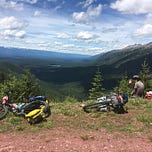

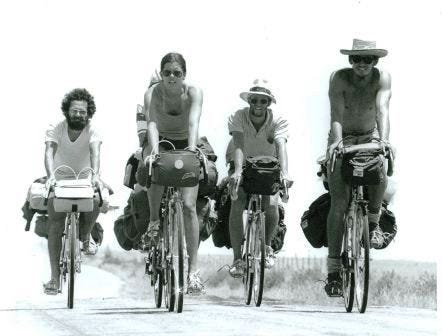
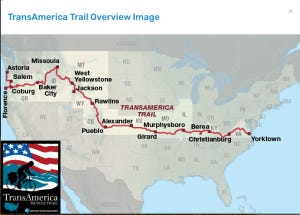
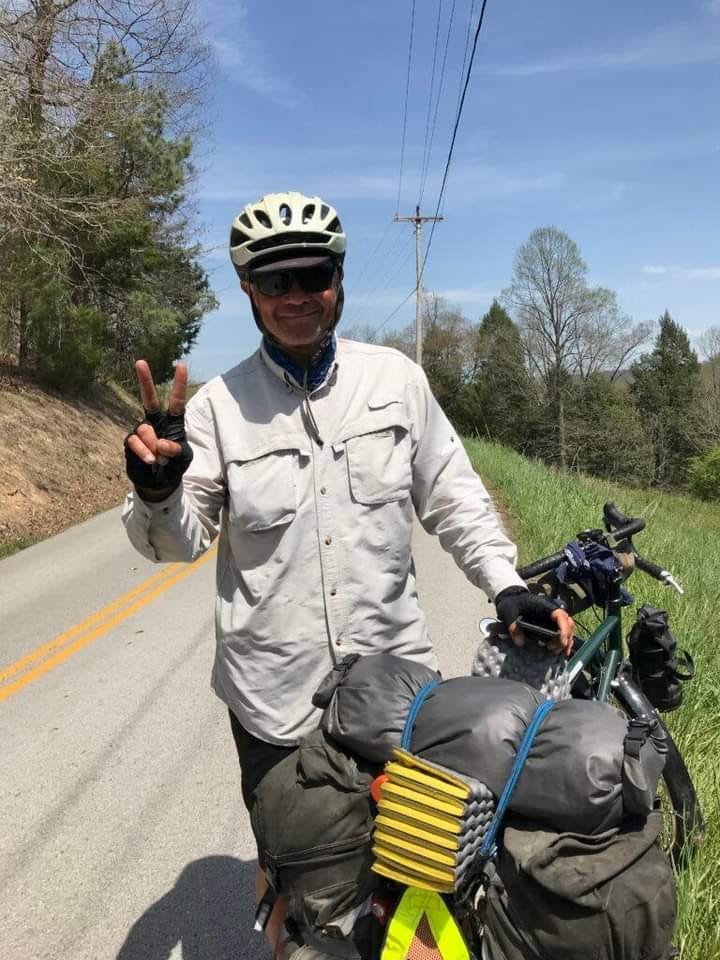
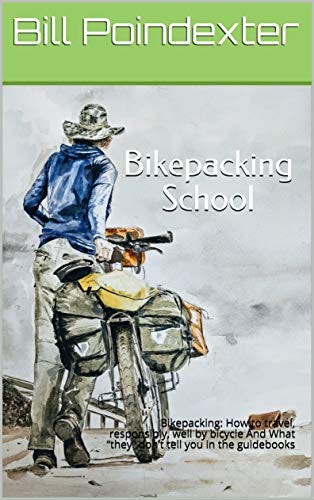






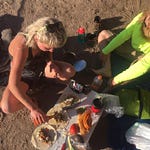

Share this post